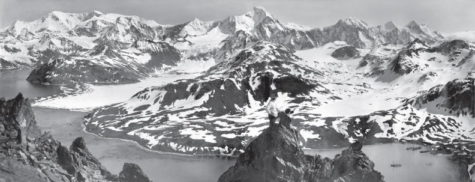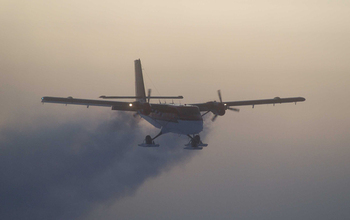 I love that graduation speeches are now posted on the internet. Listening to them, the good ones, I can’t help but feel a little bit of that helium of opportunity and promise that I once had, in early summer, when I was the one who got to walk across the stage.
I love that graduation speeches are now posted on the internet. Listening to them, the good ones, I can’t help but feel a little bit of that helium of opportunity and promise that I once had, in early summer, when I was the one who got to walk across the stage.
One of my favorite speeches came before YouTube, which might be why it seems so perfect in my memory. A local newspaper columnist told the story of Ernest Shackleton’s 1914 expedition and how he and his men survived two Antarctic winters—one stuck in the pack ice, the other on a desolate island while a few crew members went for help. At the time, I’d never heard of Shackleton, and was enthralled by the long odds and the daring rescue attempt.
I started thinking about the speech again this week as I followed the saga of a medical rescue mission to an Antarctic field station. Earlier this month, officials determined that a member of the National Science Foundation’s Amundsen-Scott South Pole station had a medical condition that required evacuation. On June 14, two Twin Otter prop planes left Calgary on the first leg of the journey to reach the station.
Flights to Antarctica aren’t usually taken between February and October. Around midwinter, the sun doesn’t appear over the horizon; the weather is often fierce and always frigid. One small light: the skeleton crews overwintering on the continent have solstice celebrations, that have included everything from polar bear swims in zero-degree water to feasts and movie marathons. At the NSF station, where 48 people work throughout the winter on everything from monitoring atmospheric gases to the South Pole telescope, I imagine that celebrations were tempered by worry.
On the solstice this year, the Twin Otters arrived at a British research station on the Antarctic Peninsula, still 1,500 miles away from their destination. The following day, one of the planes made its way to the South Pole station. The weather there was minus 75 degrees Fahrenheit; windchill dropped it further, to minus 108.
The part I remember most about the commencement address I heard is this: after evacuating their ship in the polar ice, after traveling the rough south pole seas in a rowboat, after leaving part of their crew behind on an island, after rowing again across the sea to reach South Georgia Island, Shackleton and his men realized they’d landed on the far side of the island from the whaling station they sought.
The men started crossing the island, eventually clambering up thousands of feet into the mountains. They found themselves on a high ridge. They couldn’t see the any familiar landmarks. Night was falling, and Shackleton didn’t think they would survive it among the wind-scoured peaks. So the men lined up, held on to each other, and began a toboggan slide into the unknown.
I feel like I’ve written about this before (I even searched the LWON archives), because this story just sticks with me. Listening to the speech, I could see these men, the three of them, throwing themselves into a world they couldn’t see, together. These days, our rescue teams are equipped with GPS and weather data and any number of critical supplies, but there’s still that moment when the nose tips up, when the boat separates from shore.

On June 22nd, the plane returned safely to the British station on the peninsula, carrying the original patient and another as well; they then flew on to Chile. According to the Associated Press, one of the workers suffered from a serious gastric condition, the other from a heart attack.
More than one hundred years ago, about a month before the darkest night of the year, Shackleton and the two men with him slid to a stop several thousand feet from the ridge, picked themselves up, and started walking as the moon rose. They reached the whaling station the following afternoon, and returned to rescue the rest of their crew.
Rescues don’t always have happy endings. But what is the alternative? When I heard the columnist, Jon Carroll, turning his speech out toward the graduates’ futures, he was speaking of unknowns of a different nature. “There will come a time in your life when you are standing in the dark on a snowy ridge line. I speak metaphorically — at least, I hope I do,” he said.
It’s the middle of summer here in the northern hemisphere, with long days of sunshine, with school out and vacations afoot. But more and more, it feels like we are mired in a metaphor: The past few weeks have felt as lightless as any midwinter’s night.
“What is the very best thing you can do?” Carroll asked. All these years later, I still think his answer is still a good one. “Link arms with your friends and launch yourself into the darkness, knowing that you know nothing and having the courage of your ignorance.”
**
Panorama of South Georgia Island by Shackleton expedition photographer, Frank Hurley, via Wikimedia Commons
Photo of Twin Otter by Jason Medley, NSF